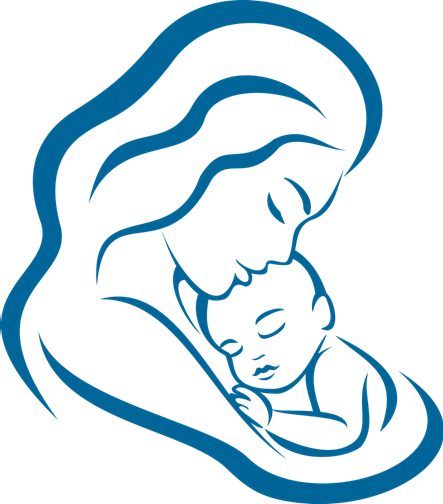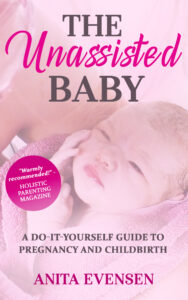Your Quick Guide to Labor & Childbirth
Arm yourself with as much knowledge as possible about labor and childbirth. When you understand what is happening, you won’t need to feel afraid. Your body can do this!
There’s a lot to learn about labor and birth. As a first-time mother, you may be unsure of recognizing the signs of true labor. But even women who are pregnant with second or subsequent babies will have questions. It’s a good idea to know a little about the process so you can spot complications when they arise.
The most important part about giving birth naturally may be to overcome your fears. Most healthy women can give birth on their own as long as the process isn’t interfered with.
Here you can learn more about good laboring positions, due date anxiety, and how your partner can assist you during labor and birth.
Labor and birth are not scary.
In fact, giving birth is an exhilarating experience if you take the time to listen to your body and your baby. And since you’re always going to remember your birthing experience, it’s really important to have the birth you want.
What to Do When the Midwife Doesn’t Make It
Assisting a woman in childbirth is not necessarily difficult. A woman who goes into labor early and progresses quickly is not likely to need medical help. Take a deep breath and have some faith!
That being said, if you have engaged a midwife or a doctor and your caregiver doesn’t make it, you’ll want to know what to do. The following list is an abbreviated cheat sheet that is designed to help you. When in doubt, let events take their course as childbirth proceeds best when it’s not interfered with. You can certainly call 911, and you should do so if there are any indications of complications you cannot handle on your own.

How to Assist During Labor
- Remind the laboring woman to go to the bathroom at least once every 30 minutes.
- Offer the laboring woman water to drink. Since she’ll probably just take a sip at a time, keep offering it to her at regular intervals. It helps if the cup has a straw so you can hold it for her.
- If the woman wants to give up, offer her gentle encouragement.
- If the woman has a really hard time, you can offer to get her in the tub or the shower. Make sure that the tub is not slippery. If it is, help her sit down.
- You can talk to the laboring woman, but if she asks you to be quiet, you need to abide by her wishes.
- If you’re comfortable with it, you can offer a massage or other physical contact. Some women really crave it, while others prefer to be left alone.
How to Assist During the Birth
- Encourage the woman to be in a favorable position. Don’t let her lie on her back.
- Don’t pull on the cord.
- Let her scream if she feels like it (some women are screamers, some aren’t). Don’t worry about the neighbors. However, to avoid perineal tearing, it’s better for the laboring woman to make low-pitched moaning sounds than to give in to high-pitch screaming.
- Make sure you have warm towels ready if she is actively pushing.
- Make sure the baby is caught or lands safely upon delivery.
- Help her hold her baby to keep them both warm.
How to Evaluate the Baby
- The baby needs to breathe within the first minute of being born. Encourage this by gently wiping mucus off the baby’s face and rubbing his back. Suctioning nose and mouth is unnecessary in most cases, but be prepared to do so.
- Slightly elevating the baby’s body and rubbing the baby’s back and flicking his feet may also help him breathe on his own. Lay the baby on his tummy with his head to the side to allow the mucus to drain. As a last resort, mouth-to-mouth resuscitation should be tried.
- The baby should turn rosy or darken (ethnicity depending) within a few minutes.
- The baby doesn’t need anything except to be held and loved, at least for the first little while.
Evaluate the Mother
- Keep a close eye on the mother after birth. If she shows signs of dizziness, shock, extreme blood loss, or any other problems, you might need to call 911.
- After the baby is born, the mother won’t feel any pain at all. She will most likely feel relieved, elated, and emotional. Let her hold her baby. She needs it as much as the baby does.
The Cord and the Placenta
- There’s no rush to cut the cord. Don’t cut it until it stops pulsating.
- There’s no immediate rush to deliver the placenta. Allow mother and baby to bond and nurse, and it will happen.
- If the placenta has not been born after an hour or more, you can encourage the woman to switch positions. She can try to push it out, but don’t ever pull on the cord. If that doesn’t work, try to massage the uterus. Nursing can also help her expel the placenta, because it encourages oxytocin release.
- The placenta shouldn’t be put in the regular trash, because it might invite unnecessary attention. If you don’t want to encapsulate it, bury it outside.
- Tie off the cord with shoestring within 6 inches off your baby’s belly. Tie it off again another inch or two from there, and then use scissors to cut in the middle. Later, after your baby has nursed, when you are ready to weigh him, you can use the clamp to shorten the umbilical cord attached to his belly.
- The placenta should be in one piece with no torn parts. You can try locating the three twists in the placenta (three arteries and one vein).
The First Few Days after Birth
- It’s important to make sure the baby nurses regularly. Even before the milk comes in, the baby will get plenty of nutrients from the colostrum. You can also make sure the baby is feeding okay by verifying output. What goes in must come out. If you’re changing diapers a lot, you probably don’t have anything to worry about.
- The mother may experience severe cramping after birth. This is natural. The uterus is shrinking back down to original size, and it can be painful, especially after second and subsequent births. She can try a hot pillow, massage, switching positions, and over-the-counter Ibuprofen. The afterpains will be worse during nursing sessions.
- If you haven’t done the research already, figure out how to get a birth certificate for your baby at this time.
Are You Looking for Information on
Labor & Childbirth?
The Unassisted Baby includes a comprehensive overview on the signs of labor, the stages of labor and birth, what to watch out for, how to examine and care for your newborn, and how to make sure mother and baby are safe. It also includes a handy guide for fathers, teaching them how to help and be present during the birth. Get your copy now!

